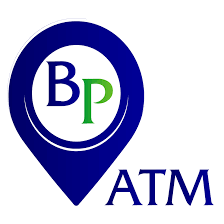Outsourcing ATM management presents a compelling option for banks seeking to reduce costs, improve efficiency and focus on core business activities.
The biggest challenge that banks are facing in today’s competitive landscape is cost. The pandemic changed the world as we know it, and ATM transaction volume was not immune to these changes. Since COVID, transaction volume at ATMs has declined by about 10-20%. Some markets are different from others, but the decline is showing up everywhere. ATMs have a high fixed cost component, and when transaction volumes decline, per-unit costs increase. Add stubborn inflation to the mix, and the result is a quite significant and highly visible cost challenge.
Why Are Community Banks Choosing to Outsource Their ATM Management?
The principal reason is to reduce costs. ATMs are not a channel that banks can just shut down. In markets where the use of cash has declined, consumers depend on conveniently located ATMs as a cash access and servicing point. From a broader perspective, most banks either have, or are in the process of, transforming their branches into more of a sales center and less of a transaction center. Consequently, migrating cash transactions to an automated channel like ATMs is critical to this migration.
Given the importance of the channel but faced with significantly increased cost, the imperative is clear — keep the footprint of cash access points but reduce the cost of owning and operating it.
This imperative has taken on a very different characteristic with some banks. Some banks want to turn their ATMs into profit centers, which is getting increasingly difficult to do. Saying you want your ATMs to be profitable and achieving this are two very different things. Interchange rates have fallen over the past decade or more, so this revenue source alone is not sufficient to make the ATM channel profitable. The question remains how to generate sufficient revenue at the ATM. ATMs have historically been a servicing channel for customers — never intended, structured or run as a profit center.
Outsourcing the ATM channel, either fully, including the ATM assets themselves, or partially to focus just on operating the channel on behalf of the bank, is not a cure all for everything, but it should be an effective measure by which to address the cost challenge.
When banks outsource their ATM channel, servicers like BluePoint can buy equipment and services for less; we can monitor ATMs and process transactions more efficiently; and we can operate the channel (disputes management, cash replenishment, parts refurbishment, etc.) more effectively. Beyond this, our roots are in ATM channel management as a for-profit business, so we know how to add value layers to the ATM to optimize revenue potential.
BluePoint’s operations span the U.S.: loading cash in ATMs, performing first-line maintenance and second-line escorting services for these ATMs. We also provide monitoring and cash forecasting services for the ATMs. Not only does this give us a strong knowledge base of the devices themselves, but importantly, it gives us first-hand knowledge of the environment — the localities in which these devices operate. This localized knowledge is a key ingredient on which we are offering a more complete set of services.
In addition to operating expense savings of nominally 15-20%, there’s a CapEx bonus embedded in these numbers. When we take ownership of the assets, it falls on us to ensure that they remain compliant with all regulations as well as network operating rules and requirements. Every three to four years, like clockwork, a new software update, software sunset or compliance requirement is mandated, which translates directly into capital cost. Most banks would prefer to direct their capital into digital channels; outsourcing the ATM channel, in its entirety, allows this to happen.
Many banks we have worked with have a limited understanding of the true cost of owning and operating their ATMs. It is relatively easy to quantify third-party costs such as SLM services, but much more difficult to quantify costs that are embedded into operations like SG&A or overheads. These hidden costs, such as managing multiple third parties, create organizational and operational complexities that can be shed in a well-structured outsourcing relationship.
If Outsourcing Is So Attractive, Why Haven’t More Banks Opted In?
This is a big decision for a bank. Banks have spent decades building their ATM channel, and there’s typically a strong emotional attachment to it. Only over the past decade (and even more significantly since COVID) has the cost of this channel started to become clearer to bank executives. Most, if not all, banks are now looking at this, and it’s only a matter of time before they act. In the meantime, there are a lot of proof points to pass and trust to be built. BluePoint works with banks over a relatively long sales cycle to build this trust and pass these proof points, including conducting pilots to demonstrate our capabilities.
Key Points
Challenges Faced by Banks
- Cost Pressures: The biggest challenge for banks is rising costs, particularly after the decline in ATM transaction volume due to the pandemic. ATMs have a high fixed cost component, making declining usage a significant financial burden.
- Shifting Branch Focus: Banks are transforming branches into sales centers, requiring a migration of cash transactions to automated channels like ATMs.
Why Outsource ATM Management?
- Cost Reduction: Outsourcing allows banks to leverage the economies of scale of a specialized provider, leading to significant operational expense (OpEx) savings of 15-20%. Additionally, BluePoint assumes responsibility for capital expenditures (CapEx) associated with ATM compliance and upgrades.
- Focus on Core Business: Outsourcing frees up banks to focus on core digital banking initiatives by eliminating the complexities of managing and maintaining their ATM networks.
- Potential for Profitability: BluePoint leverages its expertise to maximize revenue potential through value-added services at ATMs, though this benefit may not directly translate to banks.
Why Haven’t More Banks Outsourced?
- Emotional Attachment: Banks have a long history with their ATM networks, making the decision to outsource challenging.
- Building Trust: Shifting to an outsourced model requires establishing trust with the service provider through pilot programs and cost-benefit demonstrations.
Outsourcing ATM management presents a compelling option for banks seeking to reduce costs, improve efficiency and focus on core business activities.









